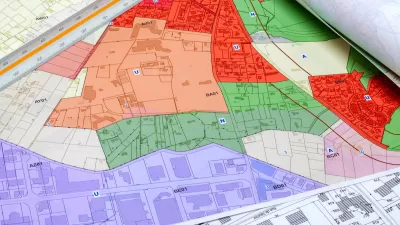As delegates from 191 nations gather in Durban, South Africa to tackle climate change, a new report shows the largest increase in carbon emissions, and the greatest percentage increase since 2003. Coal combustion accounts for more than half the gain.
"Emissions rose 5.9 percent in 2010, according to an analysis released Sunday by the Global Carbon Project, an international collaboration of scientists tracking the numbers...The growth rate in the 1990s was closer to 1 percent yearly.
In the United States, emissions dropped by a remarkable 7 percent in the recession year of 2009, but rose by just over 4 percent last year, the new analysis shows."
By comparison, China, which surpassed the U.S. several years ago as the world's top emitter, increased emissions by 10.4%.
Fifty-seven percent of the increase in emissions comes from the developing world. However, the researchers were quick to point out that the increase was largely due to burgeoning energy-intensive manufacturing of goods imported by wealthy nations - pointing to a reason for developed nations, who may have spent vast sums to increase energy efficiency and reduce coal consumption, to retain their manufacturing sector.
"Scientists say the rapid growth of emissions is warming the Earth, threatening the ecology and putting human welfare at long-term risk."
One researcher's outlook was grim: "There's no evidence that this trajectory we've been following the last 10 years is going to change", remarked Glen P. Peters of the Center for International Climate and Environmental Research in Oslo and a leader of the group that produced the new analysis.
FULL STORY: 2010 Carbon Dioxide Output Shows Biggest Jump Ever

Alabama: Trump Terminates Settlements for Black Communities Harmed By Raw Sewage
Trump deemed the landmark civil rights agreement “illegal DEI and environmental justice policy.”

Planetizen Federal Action Tracker
A weekly monitor of how Trump’s orders and actions are impacting planners and planning in America.

Why Should We Subsidize Public Transportation?
Many public transit agencies face financial stress due to rising costs, declining fare revenue, and declining subsidies. Transit advocates must provide a strong business case for increasing public transit funding.

Understanding Road Diets
An explainer from Momentum highlights the advantages of reducing vehicle lanes in favor of more bike, transit, and pedestrian infrastructure.

New California Law Regulates Warehouse Pollution
A new law tightens building and emissions regulations for large distribution warehouses to mitigate air pollution and traffic in surrounding communities.

Phoenix Announces Opening Date for Light Rail Extension
The South Central extension will connect South Phoenix to downtown and other major hubs starting on June 7.
Urban Design for Planners 1: Software Tools
This six-course series explores essential urban design concepts using open source software and equips planners with the tools they need to participate fully in the urban design process.
Planning for Universal Design
Learn the tools for implementing Universal Design in planning regulations.
Caltrans
Smith Gee Studio
Institute for Housing and Urban Development Studies (IHS)
City of Grandview
Harvard GSD Executive Education
Toledo-Lucas County Plan Commissions
Salt Lake City
NYU Wagner Graduate School of Public Service





























